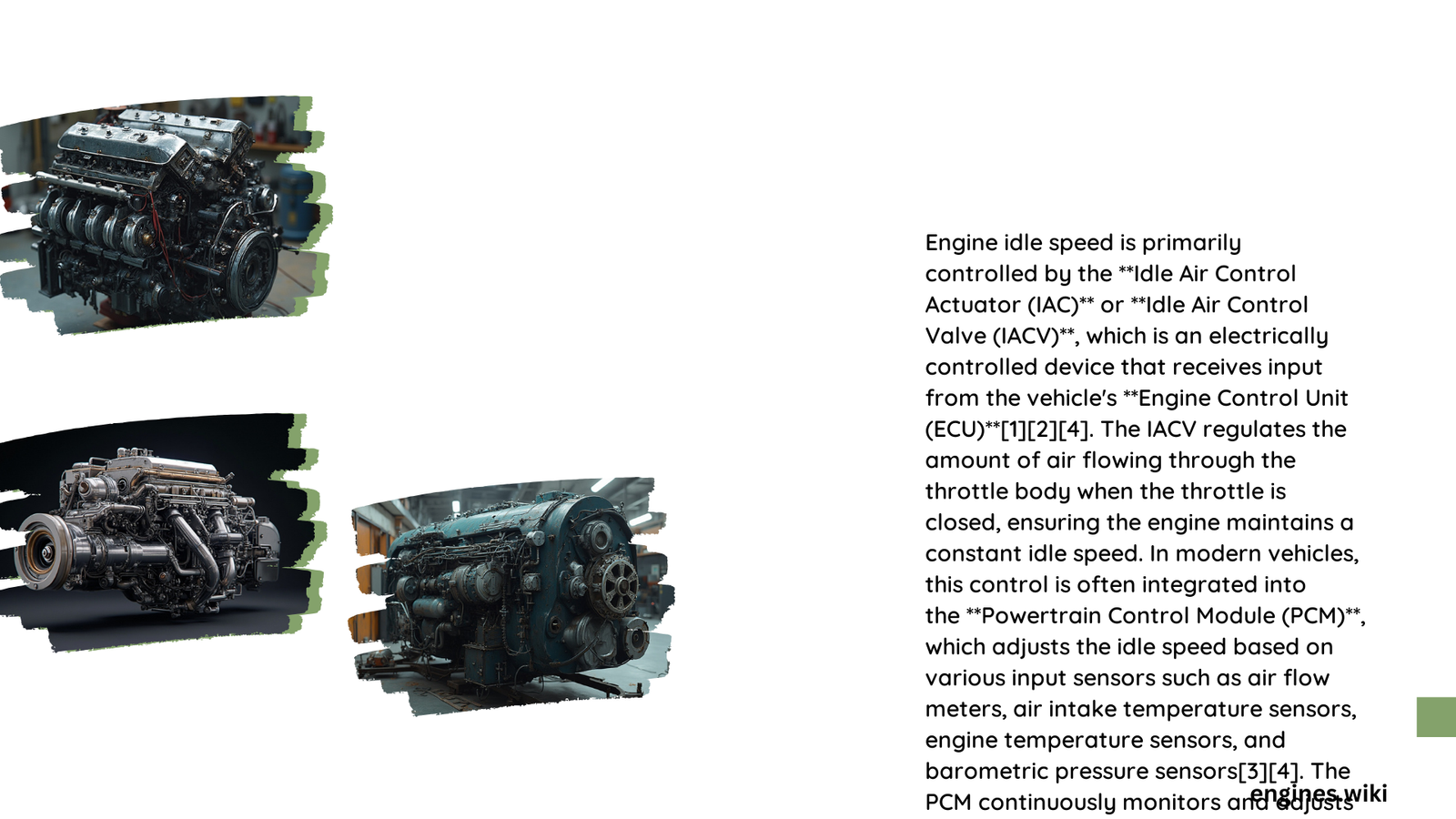Engine idle speed is a complex interplay of electronic, mechanical, and computational systems that work harmoniously to maintain a vehicle’s stable engine performance at rest. Modern vehicles utilize sophisticated sensor networks, electronic control units, and precision actuators to dynamically adjust air intake, fuel delivery, and ignition timing, ensuring smooth and consistent engine operation across varying environmental and mechanical conditions.
What Are the Primary Components That Control Engine Idle Speed?
Sensors: The Information Gatherers
Sensors play a critical role in monitoring engine conditions and providing real-time data to the Electronic Control Unit (ECU). Key sensors include:
- Throttle Position Sensor: Tracks throttle valve position
- Engine Speed Sensor: Monitors actual engine rotational speed
- Coolant Temperature Sensor: Measures engine temperature
- Manifold Absolute Pressure (MAP) Sensor: Detects intake manifold pressure
Electronic Control Unit: The Brain Behind Idle Speed Management
The ECU serves as the central processing unit that:
| Function | Description |
|---|---|
| Data Analysis | Comprehensively evaluates sensor inputs |
| Target Calculation | Determines ideal idle speed |
| Actuator Control | Sends precise signals to adjust engine parameters |
Actuators: Executing Idle Speed Adjustments
Actuators transform electronic signals into mechanical actions:
- Idle Air Control Valve
- Regulates air bypassing the throttle plate
- Controlled via duty cycle or stepper motor
-
Crucial for maintaining stable idle speed
-
Drive-by-Wire Throttle
- Electronically controls throttle opening
- Provides precise air intake management
How Does Closed-Loop Idle Speed Control Work?

Closed-loop control represents the most advanced idle speed management technique. The process involves:
- Continuous Feedback: Engine speed sensor provides real-time RPM data
- PID Algorithm: ECU uses Proportional-Integral-Derivative calculations
- Dynamic Adjustment: Instant corrections to maintain target idle speed
Factors Influencing Idle Speed Targets
Several parameters affect the desired idle speed:
- Engine Temperature
- Cold start: Higher idle speed (1250 RPM)
-
Warm engine: Reduced idle speed (900 RPM)
-
Electrical Loads
- Air conditioning activation
- Headlight and electrical system engagement
What Challenges Exist in Idle Speed Control?
Common Idle Speed Complications
- External Load Variations
- Sudden electrical or mechanical load changes
-
Potential idle speed instability
-
Sensor Calibration Issues
- Incorrect throttle position readings
-
Potential for erratic idle behavior
-
Mechanical Wear
- Degraded idle air control valve
- Reduced precision in speed management
Diagnostic and Maintenance Considerations
Troubleshooting Techniques
- Voltage Checks
- Resistance Measurements
- OBD-II Fault Code Analysis
Estimated Repair Costs
| Component | Replacement Cost Range |
|---|---|
| Idle Air Control Valve | $100 – $500 |
| Throttle Position Sensor | $150 – $400 |
| ECU | $500 – $2,000 |
Conclusion
Understanding what controls engine idle speed reveals a sophisticated ecosystem of sensors, computational algorithms, and precision mechanical components working in concert to deliver smooth, consistent engine performance.
